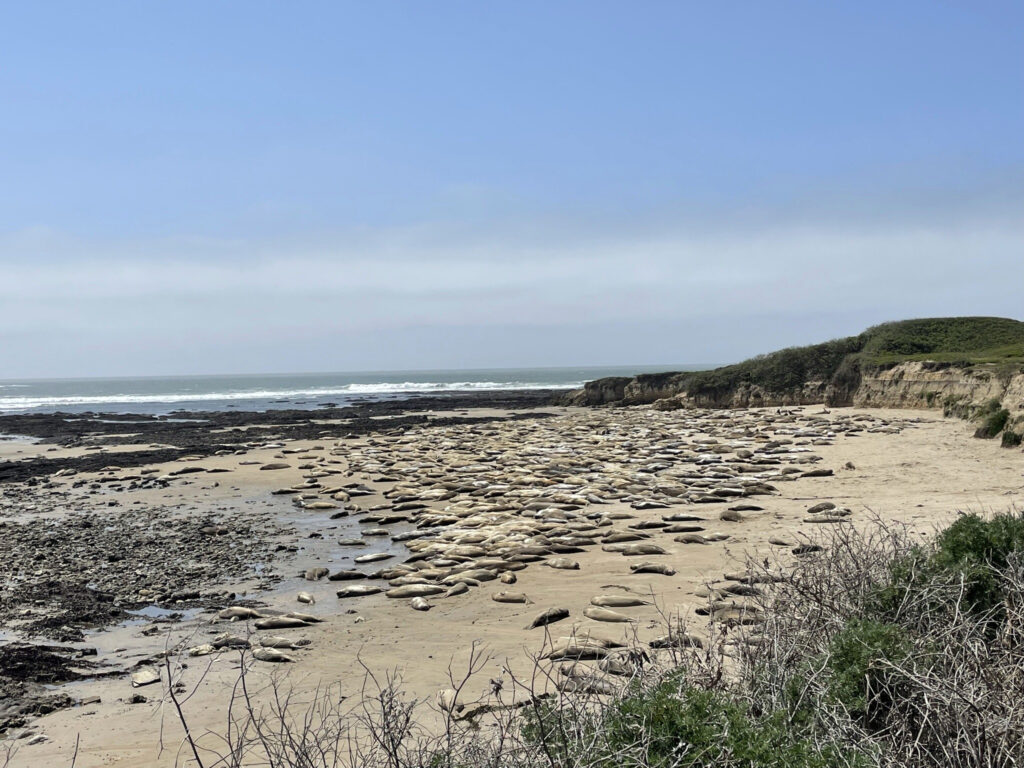News
Northern Elephant Seals – A Comeback Story
April 3, 2024

Did that boulder just sneeze?
No! It’s a northern elephant seal (Mirounga angustirostris) lazing on a sunny beach.
Elephant seals can be found resting on beaches all over Northern California. They earned their name because of the uniquely long nose on males — called a proboscis. But their size counted too when monikers were handed out. In addition to their elephant-like proboscis, they are one of the largest species of true seals. Bull males weigh in at up to 2.5 tons! Females are much smaller and sport somewhat more subtle sniffers, a fantastic example of sexual dimorphism – when sexes of the same species exhibit different morphological features that aren’t necessarily directly related to reproduction. They’re also known for the incredible depths they dive – up to 3,000 feet – while chowing down on squid and fish.
The fact they can be found at all nowadays is a miracle of conservation.
Starting in the 1800s, northern elephant seals were hunted extensively for oil to the point that they were thought to be extinct in 1884. This belief persisted until 1892 when a Smithsonian expedition rediscovered — and promptly killed several for their collections – a small population on Guadalupe Island off Mexico. That surviving population was estimated to be about 40 individuals. Since that low point, with intense protection and the implementation of the 1972 Marine Mammal Preservation Act, northern elephant seals have slowly begun recolonizing the west coast of North America. Each decade new colonies expand northward, reclaiming their historical range.
Northern elephant seals weren’t even known to breed on the coast of central California in modern times until the 1950s. Now the northernmost stable breeding population has recently been established in the Kings Range coastline near Whitethorn, California. Today there are more than 150,000 of these massive sea creatures! This is an encouraging sign of a species eager to regain its rightful place as kings and queens of the beach. Their distinctive bellows are once again a common sound along the West Coast.
And, of course, you’ll hear the occasional sneeze. So, gesundheit, big fella. No worries.